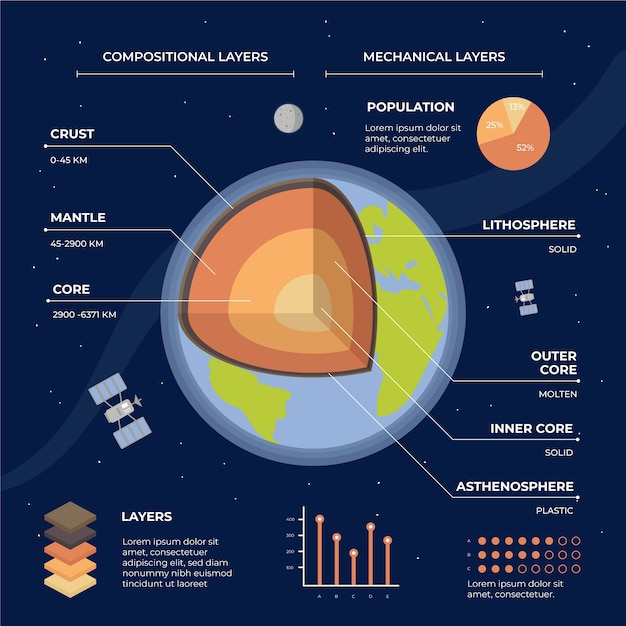Interesting Facts about the Mesosphere

The mesosphere is the layer of the Earth’s atmosphere located above the stratosphere.
Temperatures in the mesosphere can reach as low as -90 degrees Celsius.
The mesosphere extends from about 50 to 85 kilometers above the Earth’s surface.
Meteors burn up in the mesosphere due to the high concentration of gases.
The mesosphere is the coldest layer of the Earth’s atmosphere.
It is in the mesosphere where the phenomenon of noctilucent clouds can be observed.
The mesosphere is the region where the International Space Station orbits.
The air density in the mesosphere is very low compared to other atmospheric layers.
Strong winds in the mesosphere can reach speeds of up to 200 meters per second.
The mesosphere is the zone where the majority of shooting stars occur.
The mesosphere acts as a protective shield, absorbing harmful radiation from the sun.
The mesosphere experiences a process called recombination, where molecules gain or lose electrons.
It is in the mesosphere that the air begins to significantly thin out.
The mesosphere is located above the planet’s ozone layer, which absorbs a large amount of UV radiation.
The mesosphere is an important layer for studying energy transfer and atmospheric dynamics.
The mesosphere plays a crucial role in regulating the Earth’s climate.
The temperature increases with altitude in the mesosphere due to the absorption of high-energy solar radiation.
Interesting Facts about the Mesosphere part 2
The mesosphere is composed mainly of oxygen, nitrogen, and small amounts of other trace gases.
The mesosphere is a challenging region to study due to its remote location and extreme conditions.
The density of molecules in the mesosphere is so low that it can be considered a vacuum by Earth’s standards.
The mesosphere is responsible for the phenomenon of airglow, where the night sky can emit a faint glow.
The mesosphere is the layer where the auroras, also known as the northern and southern lights, occur.
The pressure in the mesosphere is about 1/10,000th of the pressure at sea level.
The mesosphere is the region where you would find most meteors disintegrate upon entering the Earth’s atmosphere.
The mesosphere is the third layer of the Earth’s atmosphere when ordered from closest to furthest away.
The mesosphere experiences very weak atmospheric tides compared to the lower layers of the atmosphere.
The mesosphere is known for its extremely dry conditions and lack of water vapor.
The mesosphere is heavily influenced by solar activity, such as solar flares and sunspots.
The temperature in the mesosphere decreases with altitude due to the decreasing warming effect from the layer below.
The mesosphere is a region of constant change and is influenced by weather patterns and natural phenomena.
The mesosphere is the layer in which weather balloons reach their maximum altitude before bursting.
The mesosphere is the layer where the sky appears extremely dark during the day.
The boundary between the mesosphere and the layer above, the thermosphere, is called the mesopause.
The mesosphere is the layer where certain types of waves, such as gravity waves, propagate.
The mesosphere is the layer where satellites can experience atmospheric drag and lose altitude over time.
The mesosphere is vital for protecting life on Earth from the harmful effects of space debris.
The mesosphere is a region where temperature inversions can occur, where temperature increases with altitude.
The mesosphere is in constant motion, with gases constantly mixing and circulating.
The mesosphere is the layer where the Earth’s rotating atmosphere begins to slow down and become closer to a fixed point.
The mesosphere is the layer where you would experience weightlessness if you were able to reach that altitude.
The mesosphere is important for studying the Earth’s climate history through the analysis of isotopes preserved in ice cores.
The mesosphere is home to numerous scientific instruments and satellites designed to study its unique properties.
The mesosphere is a region of transition between the more easily understood layers of the atmosphere.
The mesosphere is a critical layer for protecting the Earth from space debris and meteoroids that could cause damage.
The mesosphere is a fascinating and poorly understood layer of the Earth’s atmosphere, offering countless opportunities for scientific discovery.

